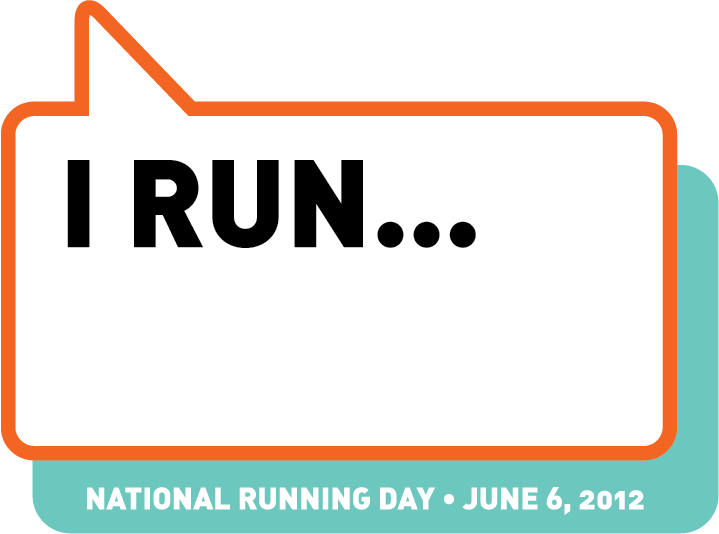Running for Beginners
Posted by JB Smith, Co-Owner on

Not sure how to fill out the above? With all the hustle and bustle of last week’s National Running Day, we realized that many of you out there might be hoping to join the running masses but don’t exactly know where to start. Perhaps the coming summer (and the bathing suits in your future) has motivated you to get off the couch and on the move. Or maybe you realize it’s almost halfway through the year, and yet you still haven’t made any moves regarding your New Year’s resolution. In any case, it’s not necessarily a good idea to go blindly into the running night. We’re glad you’re pumped about beginning this new phase of your health and wellness routine, but we want you to start off on the right foot.
Slow and Steady Becomes a Runner
If you are starting out from a low-impact (or non-existent) fitness routine, your muscular level will not yet be quite up to participating in that marathon you dreamed of. Maybe it’s been years since the last truly active period in your life. Maybe you’ve previously focused on other of exercises that worked different muscles. Either way, it’s important to remember to start slow and build up endurance over time. This will help if you have old injuries and want to see how they will react your new running routine without severely re-injuring them.
Remember that speed isn’t your goal here, endurance is. You can run like the wind once you’ve built up your fitness level, and that takes time. Of course, your weight and goals will affect your specific running routine, especially when you’re starting out. Try to run at least 3 days a week, for around 30 minutes per run. Switch this up with other activities, like biking or aerobic cross training exercises, that will keep you active but give your muscles a break to avoid overuse. With the first few runs under your belt, you’ll have a better idea of what you’re capable of. Keeping track of your runs in a notebook will help you get your running plan on track.
Something like 80% of beginner runners give up within the first month. That just makes us sad. The best way to avoid this outcome? Take your time to build up greater mileage – don’t “jump the gun.” Wait until you’re really comfortable with the amount you’re running for a couple of weeks and then push it to the next level. Let your body adapt, and add in non-running strength exercises so that your muscles are developing in a balanced manner.
*If you’re finding it hard even to do minimal running activity, switch your focus to shoring up your overall health. Running should stay on your mind, but you might find it helpful to make changes to your diet and living habits at the same time. Don’t be discouraged! Start with light aerobic exercises (if you can’t run, WALK instead), try to get more sleep, and throw out that pack of cigarettes. If you suffer from any long-term medical conditions, check in with your doctor first to discuss an exercise plan tailored to your needs.
SSSStttrreeeeetch It Out
Learn to stretch if you want to be a runner. Running actually makes your muscles shorter and tighter, so stretching really is key here. Warm, loose muscles and joints achieved by dynamic stretching routines will make running easier and not a prescription for injury. Since you’re starting out from scratch, it only makes sense to do it right! Don’t forget to end your running session with another stretching routine immediately after.
Prevent Injuries Today, Run Better Tomorrow
The right warm up and cool down routines, like stretching and walking until your heart rate returns to normal, will help keep you injury-free, as will strapping on the right running shoes. With the debate on “barefoot” running now a constant fixture in the fitness world, there are surely a lot of opinions out there about the pros and cons of cushioning and support in your shoes. What’s most important is finding the right shoes for your feet. Your best bet is to go to a specialty running store (one in particular just happens to come to mind), even if you think you have “normal” feet. The shoe fitter you speak to should be certified and thus able to put together the best options based on the shape and arch of your feet. This is always important but especially so if you suffer from any foot or chronic health conditions.
Another way to prevent injuries while getting a feel for running is to use the correct technique. Luckily, as a beginner, you haven’t (yet) fallen into any bad running habits. So stop them before they start! Focus on relaxing your body, keeping your head up, shoulders down (good posture will never do you wrong) and your lower arms hip height. Do your best not to bounce. You want to land as softly as possible since this whole deal might be a very new experience for your lower body joints and muscle. In terms of stride, research has shown that for many people a heel-to-toe strike is more efficient and reduces shock. Switching from toe-to-heel running is very difficult for many longtime runners since it’s a very different way to move. But as a beginner, you might be able to take advantage of this knowledge without needing to retrain your muscles.
We hope these tips will help you achieve your goal of becoming a runner – or at least get yourself started! Check the Fit to Run blog soon for more helpful posts about all things running and fitness. Also, stop by our Bellevue location and talk to our professional shoefitters who are also runners. They can answer questions and encourage you with your goals.
